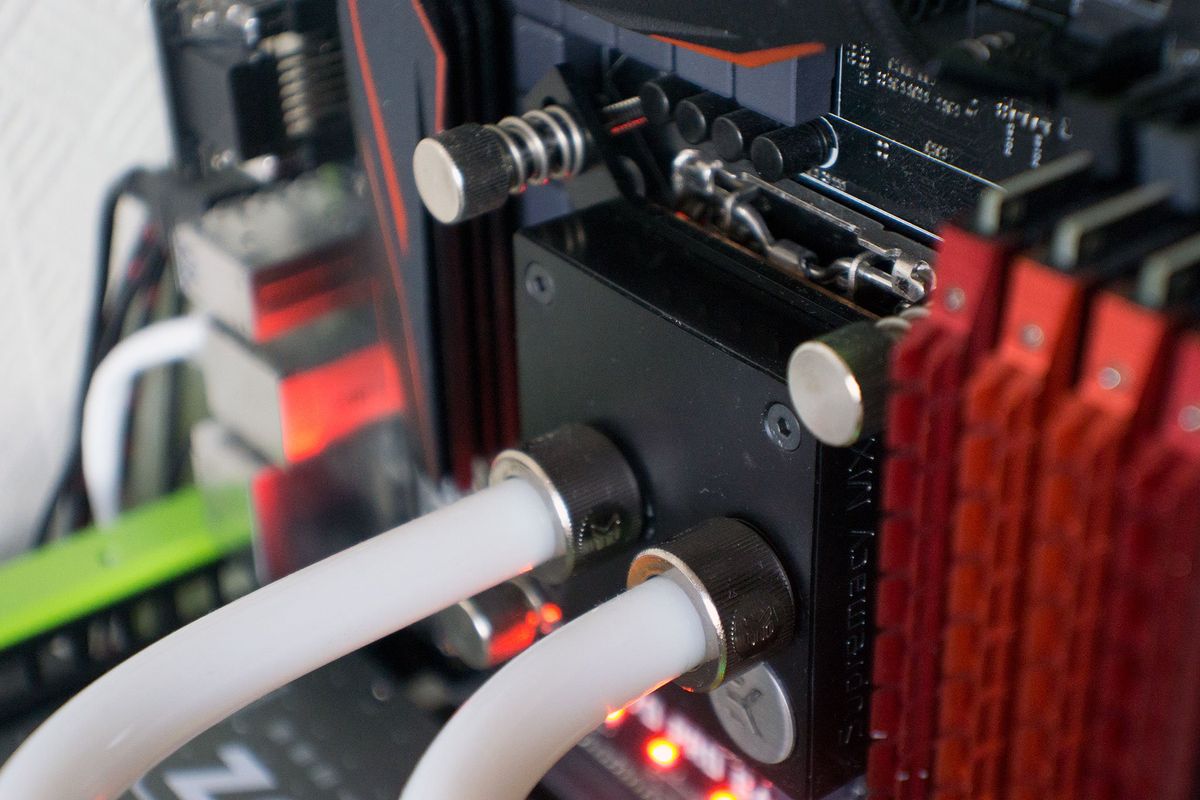Proof that a custom PC water-cooling loop can improve performance
The results we found by measuring CPU temperatures before and after we installed a water-cooling loop are staggering. Specifically, we saw a 24-degree F (13-degree C) drop using the same hardware and testing method.

Prior to carrying out our water-cooling project on the Core P5 case, we measured temperatures for the CPU and GPU to see just how good the case would be for airflow, with a single fan to cool everything down (excluding the fans on the GPU). We found the Cooler Master Hyper 212 Evo CPU cooler to perform wonderfully in keeping the overclocked Intel Core i5-6600K at a stable 126 degrees F (52 degrees C), running at just 675 RPM.
That said, 126 degrees F is still more than 100 degrees F, and we'd like to have it below that marker. The case makes things difficult when it comes to air-cooling a CPU, because there's next to no airflow inside the case. Any case fans that can be installed without modding simply blow air straight onto the glass panel and aren't efficient by any means. It's clear that this fact put the 212 Evo at a slight disadvantage, but 126 degrees F is still a good temperature and well within the operating range.
To serve as a reminder, here's what we installed:
- ASUS Pro Gaming Z170 motherboard.
- Intel Core i5-6600K (overclocked to 4GHz).
- 16GB DDR4 RAM.
- ZOTAC GTX 1070 AMP! Extreme Edition.
- 850W EVGA G2 PSU.
We pushed the system to its limit for 45 minutes, which resulted in the following readings:
| Component | Max temperature | Max fan speed |
|---|---|---|
| GPU | 140 degrees F (60 degrees C) | 1,090 RPM |
| CPU | 102 degrees F (39 degrees C) | Pump: 2,067 RPMRadiator Fans: 640 RPM |
Ambient temperature was 72 degrees F (22 degrees C). Our lowest RPM reading for the pump was recorded at 1,724 RPM with idle on around 1,849 PRM. Radiator fans — four of them, and we used a 480mm radiator for the CPU alone — hit 640 RPM with idle at around 603 RPM. Turning all fans up to their max settings and letting the pump sound like a drill brought temperatures of the overclocked Core i5-6600K down to just 93 degrees F (34 degrees C).
The CPU was at 4.0GHz for testing, but we were able to push the CPU to 4.8GHz before the system became unstable. At this level, the highest temperature reading was 114 degrees F (46 degrees C). All-in-all, the loop was a success and it can comfortably handle the amount of heat being produced by the CPU.
In other words, we're very happy with the results.
Get the Windows Central Newsletter
All the latest news, reviews, and guides for Windows and Xbox diehards.

Rich Edmonds was formerly a Senior Editor of PC hardware at Windows Central, covering everything related to PC components and NAS. He's been involved in technology for more than a decade and knows a thing or two about the magic inside a PC chassis. You can follow him on Twitter at @RichEdmonds.